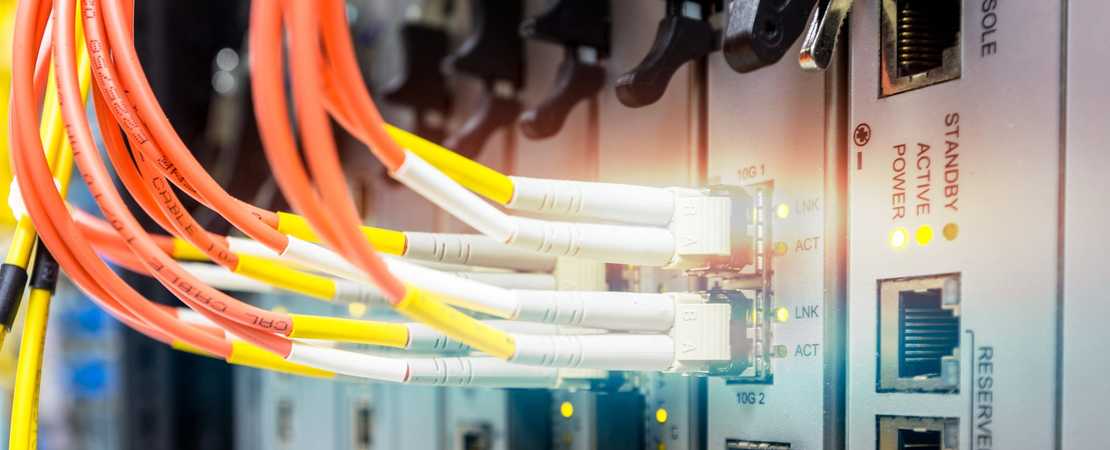You might have seen these terms in your computer settings. Or maybe you heard them tossed around by network engineers and other tech-types.
But without a jargon buster to hand, you might never have realized what each acronym means. They’re different types of networks, but what exactly is different?
Here are the key facts you need to understand the difference between LAN and WAN.
The Difference Between LAN and WAN
The purposes and configurations of LANs and WANs vary, and we’ll look at some of these in a minute. But the difference can be boiled down to a fairly simple explanation:
LAN is a Local Area Network. It covers a relatively small area.
WAN is a Wide Area Network. It covers a very large area.
That’s the key difference between LAN and WAN. But what does it all really mean? And when does a LAN become so big that it should be considered a WAN?
What Does a LAN Cover?
A LAN covers a small geographical area.
You might find a LAN in a school, where all the computers are connected to a central server. The server is the unit which manages all the resources shared by the computer users. Each student can have some of the centralized storage space for their schoolwork and run shared software from the server.
A business may also run a similar arrangement so that all users can share important information. They can also talk to each other about sensitive business data within a secure environment. They can save their work to a server which regularly gets backed up, so they know their files are safe.
The network you have in your home is also a LAN. You have a router, which manages the incoming signal from the Internet. Your computer, phone, and other devices connect to the router, either using wireless technology or with an Ethernet cable.
All these devices then form parts of the LAN. It’s possible to make devices visible to each other for easy sharing of files at home.
Data travels super fast within a LAN. This is partly because the distance between the devices is (generally) short.
When Does a LAN Become a WAN?
A LAN doesn’t “become” a WAN. A WAN is a network made up of multiple LANs.
Let’s take a simple example where both you and your neighbor have LANs for your home computers. You decide it would be pretty cool if you linked yourselves up through the walls. Maybe you want to gossip about your other neighbors on a chat service without leaving the comfort of your respective homes.
By doing that, you’re creating a WAN. This is a silly example, but it’s essentially the same as connecting two LANs halfway across the country.
Let’s look at a more life-like example now.
A business has its headquarters in Ohio, but it has branches in Kentucky and West Virginia. It uses cloud-based servers which it decided to put in Michigan because it found that location to be cheaper. For example, it might choose to use Teldat zero touch provisioning.
Each of these locations has an internal network (a LAN each) which is managed on those sites. But all those LANs are connected to the central cloud server in Michigan. The business can now communicate efficiently and securely even when staff is hundreds of miles away.
The business has created a WAN for itself that spreads across four states. It doesn’t need to shuttle employees around via airplane to have meetings. This is great because even at economy airplane rates, that can become expensive very quickly.
How Large Are WANs?
WANs can be absolutely massive. You’re on one right now. The Internet is the largest WAN in the entire world.
But a network doesn’t have to have global coverage to be a WAN.
Precursors to the Internet included several large networks used by educational and military institutions. Perhaps the most noteworthy of these was the National Science Foundation Network (NSFNET).
These networks were used to share data across the United States. As they consisted of several LANs each, they were most definitely WANs.
How Fast Are WANs?
We mentioned earlier that LANs are incredibly quick. Another vital difference between LAN and WAN is the speed at which data travels.
Modern routers serving a LAN can transfer data at speeds of up to a gigabyte (1,000 megabytes) per second or more. The technology is still evolving and getting faster all the time.
WANs are much slower. This is largely due to the number of devices communicating via these large networks.
There are also different types of cables used in larger networks. These may be disrupted by a number of factors, including weather and physical damage. WANs are also slower due to the geographical distances that data must travel, in comparison to a LAN.
However, WANs are also getting faster. If you remember using the Internet back in the mid-1990s, the hot speeds were in the high 20s to low 30s. We’re talking kilobytes though, which are the equivalent of 0.001 of a megabyte.
Today, many heavy users of the Internet would be frustrated if their connection didn’t achieve speeds of over 100 megabytes per second.
Looking For Equipment to Set Up a Network?
Now you know the difference between LAN and WAN, do you need some equipment to get building?
Check out our classifieds section for electronics to see what other users have posted in your area. You can also post your own routers, servers, and other electronic goods at no cost.
